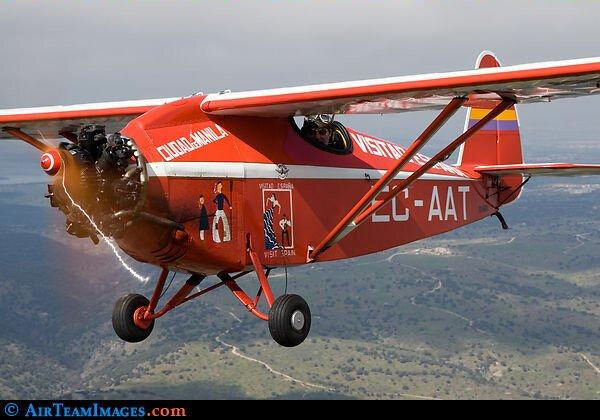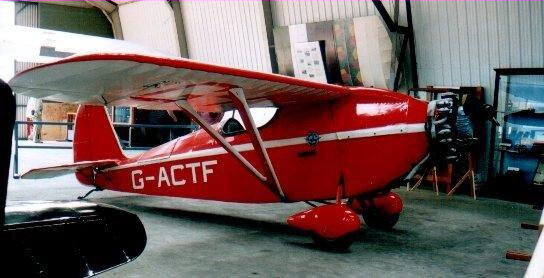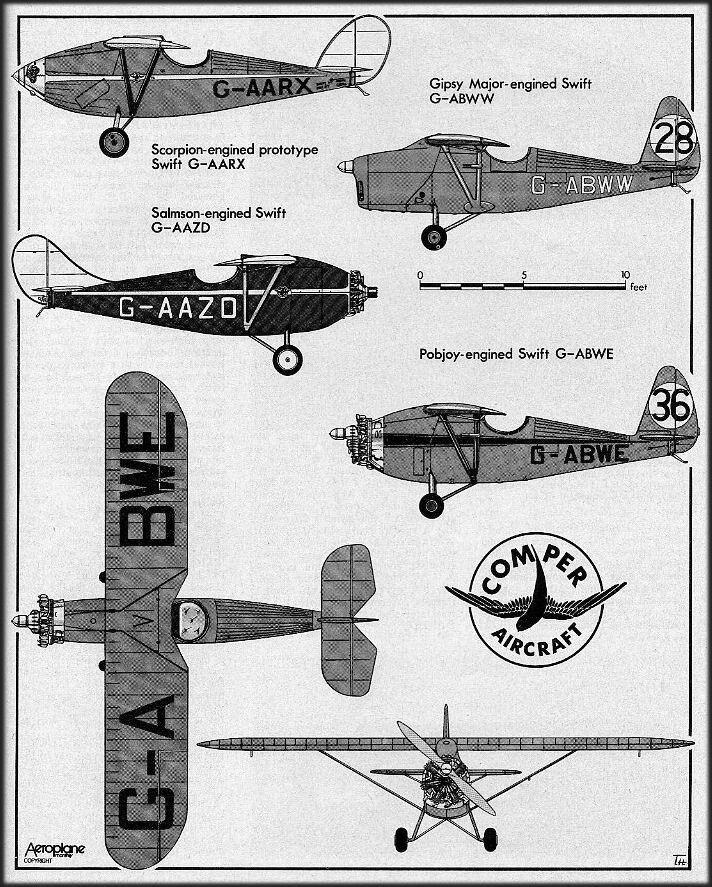The Comper Swift
General characteristics
Crew: 1
Length: 17 ft 8½ in (5.4 m)
Span: 24 ft 0 in (7.32 m)
Height: 5 ft 3½ in (1.61 m)
Wing area: 90 ft² (8.36 m²)
Empty weight: 540 lb (245 kg)
Max takeoff weight: 985 lb (447 kg)
Powerplant: 1× Pobjoy R radial piston, 75 hp (56 kw)
Performance
Maximum speed: 140 mph (225 km/h)
Range: 380 miles (611 km)
Service ceiling 22,000 ft (6705 m)
The legendary racing achievements of the Swift have been extensively documented demonstrating that its performance figures were astonishing and approached those of contemporary fighter aircraft. The Swift rapidly established a reputation as a fast aircraft, establishing many records.
The Swift was a diminutive and elegant single seater shoulder-wing sporting monoplane of wood construction. It had exceptionally clean aerodynamics, aided by a very clever internal shock-absorption arrangement for the undercarriage, which gave outstanding performance with a maximum speed over 100 mph. The wings could be folded for ease of storage and transportation.
When introduced in 1930, the Swift was advertised as the smallest light aeroplane in the world. Comper had his sights on the sporting market and its advertisements drew attention to a cockpit suffiently large to accommodate a set of golf clubs!
The prototype Swift, registration G-AARX first flew on 16th April 1930 and made its public debut at Brooklands a month later. This prototype was followed two months later by a second aircraft powered with a 50 hp Salmson radial engine. But a Pobjoy engine was in development and both Comper and Pobjoy knew that with the power and reliability promised by this new engine, the Swift could be a world beater.
The Pobjoy engined version, as was predicted by Flight magazine, quickly attracted customers. Four of the aircraft were exported to Argentina and twenty one others to fourteen different countries around the world. As only 41 were produced this was a remarkable export record. In 1930, Flight magazine wrote: "Immediately the little Comper Swift was placed on the market it found that it filled a want for those flying to out of the way parts of the Empire. Amongst the places abroad to which Swifts have already been sent are Canada, Tanganyika, New Zealand, Australia, India, South America and the Irish Free State."
Probably no other aircraft, built in such small numbers, has ever broken so many records and won so many prizes. The most outstanding of those was Charles Butler's record nine days two hours and 29 minutes flight to Darwin, Australia in October 1931. This was followed by a near record flight by Lt. Com. C Byas who flew to Cape Town in 10 days.
Swifts were entered in all the major air races of the period, competing in every King's Cup air race from 1930 until 1937. In 1933 no fewer than seven Swifts were entered. Second place overall went to the Swift G-ABW flown by Flt. Lt. ECT Edwards. Although first across the line the handicap brought him in three seconds begind the overall winner, Geoffrey de Havilland in a DH60 Moth. The red and white Swift, known as the Scarlet Angel and flown by its owner Alban Ali, a tea planter, achieved the second fastest time in the prestigious Viceroy's Cup air race in Delhi. A rebuilt and renamed version of the same plane (now Tango Foxtrot) took fifth place in the 1950 Daily Express air race.






